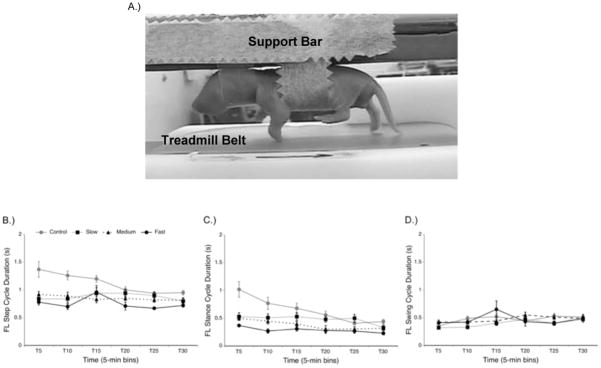Figure 1.

Treadmill stepping in the newborn rat. (A) Photograph of a P1 rat pup stepping on a treadmill. The pup is secured to a support bar in the prone posture, with the treadmill placed just below. (B) Following treatment with quipazine (3.0 mg/kg intraperitoneal injection, 50 microliters), pups stepping on a non-moving (control), slow (1.8 cm/s), medium (2.5 cm/s), or fast (3.2 cm/s) treadmill belt showed differences in step cycle duration. Pups generally showed shorter step cycle durations at the faster treadmill speeds, particularly in the first half of the test session. Step cycle duration was calculated for 4–5 forelimb steps per 5-min time bin. (C) Stance cycle duration was generally shorter for pups stepping on faster moving treadmill belts. (D) Swing cycle duration was not different among the different treadmill speeds.
